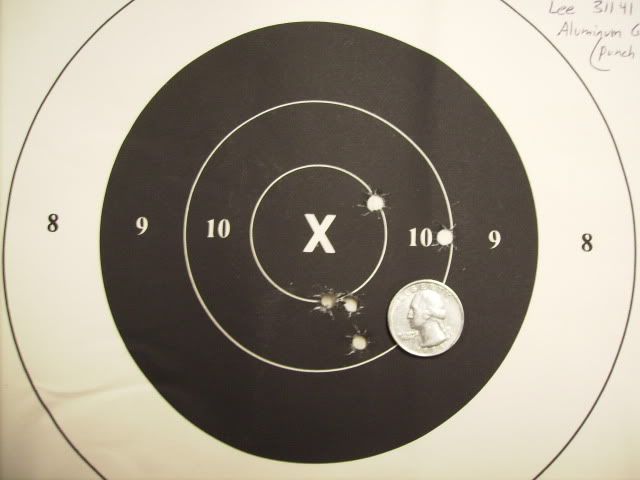I did get to the range today. I only took the .30-30.
I'm not as good a shot as Ben, but I think I did OK. Let me start with a few
excuses why I don't have "one ragged hole." First, I shot iron sights, on
a .30-30 carbine. Second, my eyes are bad. Third, it was humid as h*ll, and
my glasses fogged up incessantly. That should cover it.
Seriously, the gun was my dad's old Marlin 336. Its a pre Micro Groove, so
nice cut rifling. Its also pre drilled & tapped for scope, and there's no way
I'm gonna drill & tap it. I did mount a receiver peep on it though. It shoots
better than I can shoot it, that's for sure.

My load was 8.1 gr Green Dot, our Lee GB copy of the Lyman 31141 sized .311, lubed with LBT Blue Soft, and a CCI 200 primer. My gascheck was .004 soda can aluminum.
It really was disgustingly humid, so I only fired two groups, benched at 50 yards.


This is typical of what this gun will do. Its interesting that in both targets there's a nice little cluster forming at 6 o'clock in the X ring. the fliers, if you want to even call them that, are because I have such a hard time with iron sights. Sometimes I wish I could scope this gun, just for group testing. Oh, and the vertical stringing in the second target is not typical at all, and it is not a gun problem, it was a result of me not being able to focus the sights clearly and consistently enough today. Did I mention it was really humid ?
Just for laughs, I fired a third group with genuine Hornady gaschecked boolits, and it looked about like the first. Which is to say I think these perform just great. Next up will be the '03 Springfield 30-06, but it will probably be mid week before I get back to the range.
















 Reply With Quote
Reply With Quote




















